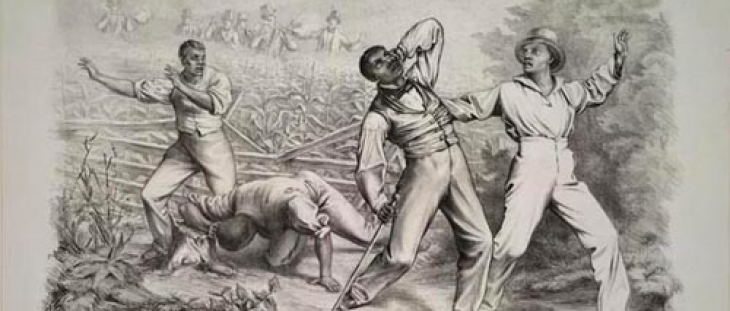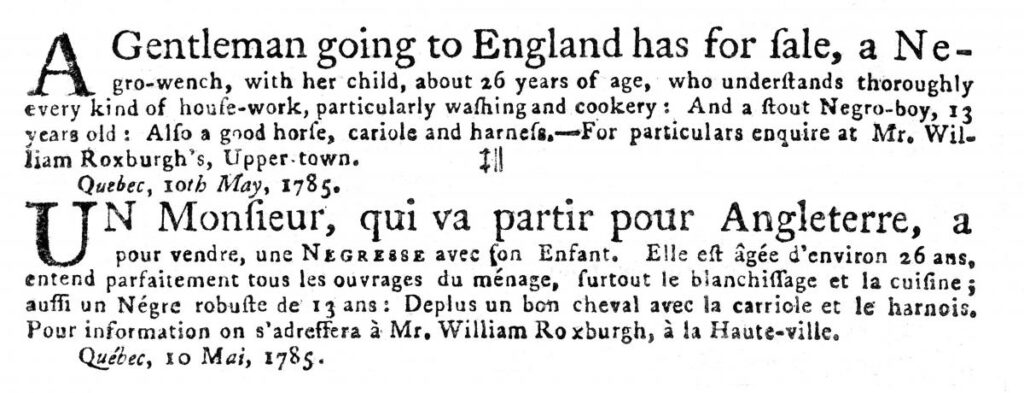
It’s long been a complaint of mine that Canadians do not know their history. Often if Canadians do know a bit of history, it’s a very naive view populated with scenes from those Heritage Minutes videos.
Canada’s history is deep, it is complex, at times it is wonderful and at other times, dark. That’s if you know the full history.
Nothing in our past takes away from the fact that we have an amazing country. It’s a country we can proudly proclaim to be the best in the world while also admitting our past and present faults.
One of those past faults is that slavery did exist in Canada.
That may be shocking to some who only know that we were an end point for the underground railroad. Yet it is true that slavery was practiced in Canada much longer than your school history books would tell you.
And for those who have emailed me to tell me that Canada began in 1867, therefore there was never any slavery, give your head a shake. Canada didn’t magically appear on the date of confederation.
Out history includes that of the Aboriginal people who were here before Europeans and that of the various colonies that made up Canada.
The truth of slavery in Canada
The Canadian Museum for Human Rights has an extensive write up of slavery in Canada that is worth reading.
Slavery was practiced by many First Nations, often people taken as captives in war were turned into slaves.
This practice was adopted in New France but so too was the buying of slaves, mainly through the African slave trade. When the British took control of New France, most of the slaves, according to the Museum, were from various First Nations groups but some estimates do say there were hundreds of African slaves as well.
The British didn’t stop the practice of slavery and as this ad from a Quebec City newspaper in 1785 shows, they kept it alive.

Slavery continued in Canada for a long time after that.
United Empire Loyalists brought their slaves with them to Quebec, Ontario and Nova Scotia.
William Jarvis, a key figure in early Toronto had slaves and wanted to keep the practice alive in what was then Upper Canada. James McGill, the man McGill University in Montreal is named for, became a slave owner after amassing his fortune in the fur trade.
These men were far from lone examples. As detailed in this article in the Canadian Encyclopedia, slave ownership was widespread among the upper classes of Canadian society. There were many people listed as slave owners that I have read about in the past but never knew there was a slave connection. That’s because we bury that part of our history.
A turn in the right direction
So yes, there were early attempts to abolish slavery in Canada and we succeeded in getting rid of it earlier than the Americans but that doesn’t mean it didn’t happen here.
Even the much vaunted Act to Limit Slavery in Upper Canada didn’t abolish slavery, it simply limited it. Existing slaves could be kept but the law stated that their children be freed by age 25.
New slaves could not be brought into Upper Canada but existing slaves could still be sold.
By the time slavery was fully outlawed across the British Empire it had mostly faded away in the colonies that would become Canada but there were still some who were freed on August 1, 1834.
There are better chapters in our history, including the participation of so many in the Underground Railroad. That doesn’t erase the chapters on slavery and neither does it mean that racism, in many forms but especially anti-black racism, didn’t continue for years to come.


It’s a shame that our school system focused so heavily on American history throughout the primary grades in particular, when I went to school. If Canada was mentioned, it was only as some small part of a another lesson in American history. It wasn’t until middle school that some options for periods of Canadian history appeared, and I discovered that I actually enjoyed learning about history. Now, history from anywhere appeals to me, but I would still have preferred a better grounding in our own history.